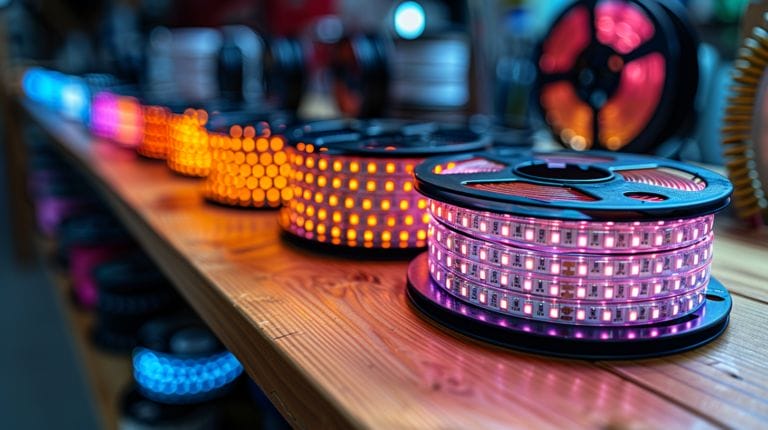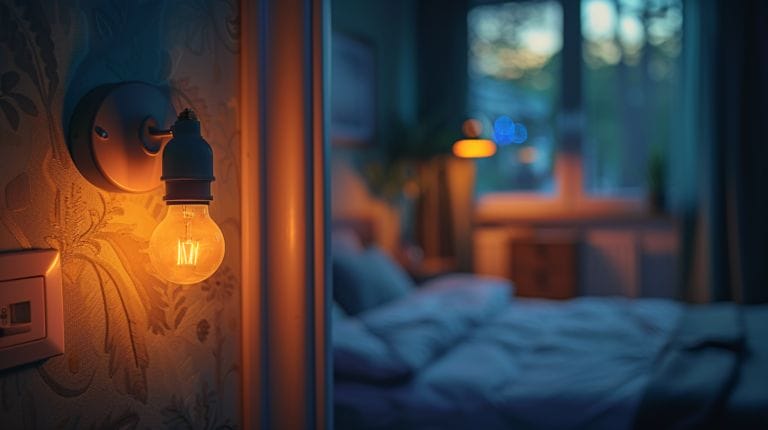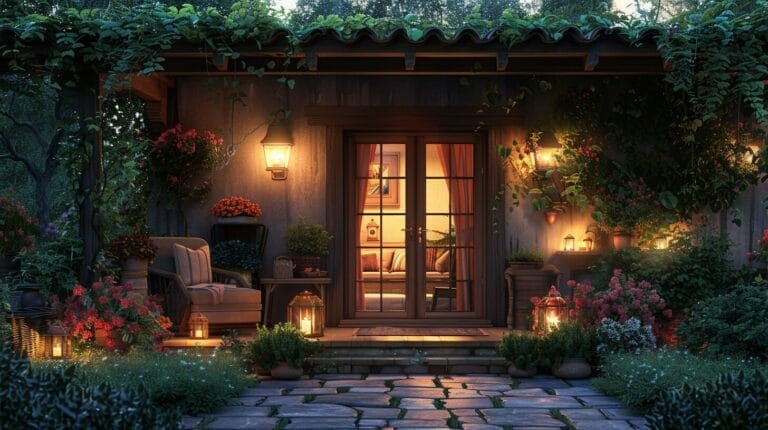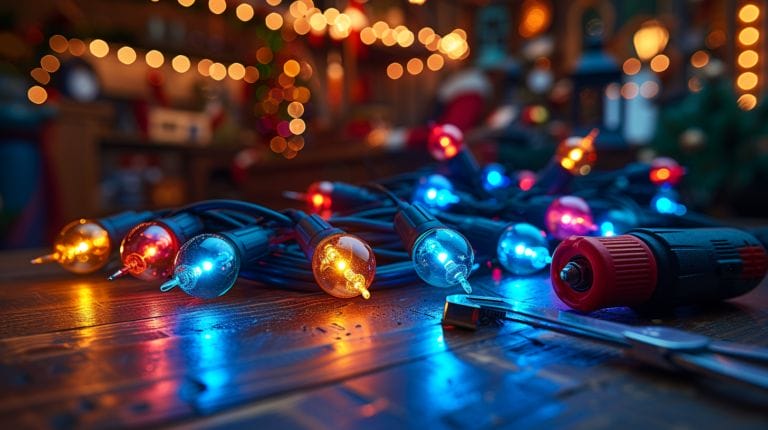Bright White Vs Daylight Bulbs: Best Light for Your Space
When we’re deliberating between bright white and daylight bulbs for our space, it’s essential to take into account the atmosphere we want to create. Bright white bulbs, with their neutral light, are great for modern aesthetics and precise tasks in kitchens. On the other hand, daylight bulbs bring a blue-white light that enhances clarity and productivity, making them perfect for workspaces or living rooms. Yet, the decision isn’t always straightforward. How do we determine which bulb will truly meet our needs and preferences?
Let’s explore the nuances and find out which option could be the best fit for each room in our homes in our Bright White Vs Daylight Bulbs guide
Key Takeaways
- Bright white bulbs (3500K-4100K) provide a neutral, clean light ideal for kitchens and bathrooms.
- Daylight bulbs (5000K-6500K) mimic natural sunlight, perfect for reading nooks and home offices.
- Bright white bulbs are suitable for contemporary interiors needing true color rendition.
- Daylight bulbs enhance productivity and reduce eye strain in workspaces.
- Choose bright white for a cozy ambiance; opt for daylight bulbs for a vibrant, daylight-inspired atmosphere.
Understanding the Basics of Light Bulbs: Bright White vs Daylight

When choosing between bright white and daylight bulbs, it’s crucial to understand color temperature and its impact on the lighting atmosphere. Color temperature, measured in Kelvin (K), determines whether light has a warm or cool appearance. This understanding is vital for creating an innovative and effective lighting environment.
Soft white, bright white, and daylight bulbs each offer unique lighting experiences. Soft white bulbs, typically around 2700K to 3000K, emit a warm, yellowish light similar to traditional incandescent bulbs, creating a cozy atmosphere.
In contrast, bright white bulbs range from 3500K to 4100K, providing a more neutral white light that’s ideal for clean aesthetics without harshness.
Daylight bulbs, however, have the highest color temperature, usually between 5000K to 6500K. They produce a blue-white light akin to natural daylight, perfect for spaces where clarity and precision are paramount. For instance, daylight bulbs can enhance productivity in workspaces and invigorate environments needing an energy boost.
Bright White Bulbs: Ideal for What Settings?

Bright white bulbs, emitting a crisp and neutral light, are perfect for spaces where a modern and clean aesthetic is desired. These bulbs are particularly suitable for areas in our homes where focus and clarity are essential.
Ideal settings for bright white bulbs include the kitchen, where precision in meal preparation is key. The neutral light of these bulbs doesn’t distort colors, making them an excellent choice for spaces where true color rendition is crucial—like a home office or a study nook. Bright white bulbs illuminate without overpowering, thus creating an environment that feels both welcoming and efficient.
Another space where clarity is essential is the bathroom. Applying makeup or shaving under bright white lighting ensures we see every detail clearly. By incorporating these bulbs into our home decor, we can create a cohesive, modern look that supports our daily activities with the best possible lighting.
Daylight Bulbs: Where Do They Shine Best?

Daylight bulbs mimic natural sunlight, making them perfect for areas where clarity and true color rendering are essential. They’re ideal for spaces where we want to feel invigorated and stay productive.
For instance, daylight bulbs work wonders in the living room. By casting a bright, crisp light, they highlight the natural features in our furniture and flooring, bringing out the rich, warm tones. This type of lighting can make our living room feel more spacious and inviting, creating an environment that’s perfect for social gatherings or simply unwinding with a good book.
Daylight bulbs are also a fantastic choice for home offices or study areas. They help reduce eye strain and boost concentration, making them perfect for tasks that require precision and focus.
For culinary enthusiasts, installing daylight bulbs in the kitchen can enhance our cooking experiences by providing clear visibility and showcasing the true colors of our ingredients.
Comparing Bright White and Daylight Bulbs in Different Areas

While both bright white and daylight bulbs have their unique strengths, understanding how they impact different areas of our homes can help us make more informed lighting choices.
Let’s explore how these lighting options can transform our living spaces:
- Living Rooms: For a cozy and inviting ambiance, bright white bulbs work well with warm color palettes and traditional interior design. They create a comfortable atmosphere for relaxation.
- Kitchens: Daylight bulbs are ideal here, providing excellent task lighting for food preparation and cooking. Their bright, natural light enhances visibility and sharpens details.
- Home Offices: Daylight bulbs boost productivity by mimicking natural daylight, reducing eye strain and improving focus. Their crisp light is perfect for workspaces.
- Bedrooms: To foster a serene and restful environment, bright white bulbs cast a soft, warm glow that promotes relaxation and complements soothing interior design elements.
Making Your Decision: Choosing Between Bright White and Daylight Bulbs

After exploring how bright white and daylight bulbs can transform different areas of our homes, it’s time to decide which type of bulb to choose. We must weigh technical specifications against our personal preferences to make an informed choice.
Bright white light typically ranges between 3,000K to 4,000K on the Kelvin scale, offering a crisp, clean ambiance that’s perfect for kitchens and workspaces. On the other hand, daylight bulbs, which range from 5,000K to 6,500K, mimic natural sunlight and are ideal for reading nooks and bathrooms where clarity is essential.
Expert recommendations suggest using bright white light in areas where precision tasks are performed, such as home offices or garages. Conversely, daylight bulbs are often recommended for spaces where we want to enhance natural light, like living rooms or outdoor areas.
Ultimately, our decision should align with our personal taste and the specific needs of each room. Do we prefer a cozy, warm atmosphere or a vibrant, daylight-inspired feel? By considering these factors and relying on expert guidance, we can select the perfect lighting to innovate and elevate our living spaces.
Conclusion
Ultimately, choosing between bright white and daylight bulbs depends on the ambiance we want to create in our spaces. Bright white bulbs are great for modern designs and tasks requiring true color rendition, while daylight bulbs enhance clarity and productivity with their vibrant, natural light.
By considering our specific needs and personal preferences for each room, we can make the best choice to guarantee our space is both functional and inviting.
Frequently Asked Questions
What is the difference between Bright White and Daylight bulbs?
Bright White bulbs have a color temperature of around 3500K to 4100K, which provides a cooler and more energetic light, ideal for spaces where you need to focus and stay alert. On the other hand, Daylight bulbs have a color temperature of 5000K to 6500K, offering a brighter and whiter light that mimics natural daylight, suitable for spaces like kitchens and work areas.
Which type of bulb is better for a living room, Bright White or Daylight?
For a living room where you want a cozy and relaxing atmosphere, it is recommended to use Bright White bulbs with a color temperature between 2700K to 3000K. Daylight bulbs may feel too harsh and bright for a living room setting.
When should I choose Soft White bulbs over Bright White or Daylight bulbs?
Soft White bulbs, with a color temperature of 2700K, provide a warmer and more ambient light that is perfect for areas where you want to create a relaxed and cozy environment, such as bedrooms or dining rooms.
Are LED light bulbs a good option for both Bright White and Daylight settings?
Yes, LED light bulbs are energy-efficient and versatile, making them suitable for both Bright White and Daylight settings. They offer a wide range of color temperatures and can be dimmable, providing flexibility in lighting choices.
How do I determine the brightness of a bulb, related to its wattage?
The brightness of a bulb is measured in lumens, not watts. While watts indicate energy consumption, lumens measure the actual light output. When selecting a bulb, look for the lumens rating on the packaging to gauge its brightness level.







